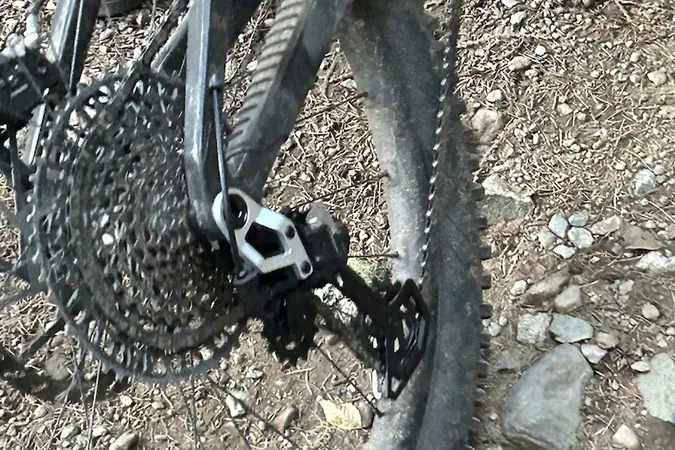
Seb Stott's Bold Predictions for 2025: What’s Next in Cycling Technology?
2025-01-02
Author: Noah
Mechanical Transmission Takeover?
Stott envisions a significant advancement in mechanical transmission systems, citing SRAM Transmission as the gold standard for shifting performance. He claims that the electronic drivetrain systems, while innovative and responsive—even under challenging terrain and high-pressure conditions—come with their own set of concerns. High costs, battery dependence, and the need for technological setups might deter many traditional bikers who prefer the simplicity of mechanical systems.
He acknowledges a prototype mechanical version of the SRAM Transmission that emerged last year, which could bring a balance between cost and performance. Although such a system might sacrifice some of the functionality and aesthetics of its electronic cousin, it promises robust shifting even under heavy loads. With a recent poll indicating a preference for mechanical drivetrains among cycling enthusiasts, the potential release of this prototype in 2025 could revolutionize the market if priced competitively.
The Blurring Lines of eMTB Categories
Stott notes a shift in the eMTB landscape, where traditional classifications of "super-light" and "full-power" bikes are becoming less distinct. Recent innovations have seen the rise of eMTBs that combine powerful motors with lightweight designs, effectively merging these two categories.
For instance, Cannondale's recent launch of a full-power eMTB weighing around 20 kg boasts an 85 Nm torque, while the Amflow PL surprises the market with a staggering 105-120 Nm of torque and a weight of merely 19.2 kg. These developments suggest a trend toward more full-power eMTBs that challenge the conventional distinctions between power and weight, shifting the conversation to practicality and real-world applications. This year’s models, with their removable batteries and durable components, indicate that riders may soon experience the best of both worlds.
Wider XC Tires on the Rise
As for cross-country racing, the conversation is evolving to include wider tires, with Victor Koretzky notably racing on 2.5” tires recently. Experts are increasingly betting on broader options, moving beyond the standard 2.4” tires that have dominated the scene. With advancements in tire technology, manufacturers are working to reduce the weight and rolling resistance issues associated with wider designs, while enhancing grip and riding comfort on uneven terrain.
Stott’s predictions suggest that the next XC World Cup could showcase a new generation of tires exceeding the current width standards, highlighting a significant change in race strategies and equipment choices.
Looking Ahead
Overall, Stott's predictions paint a picture of an evolving cycling landscape that embraces both technological advancements and a return to mechanical reliability. Whether you're a hardcore mountain biker or a casual cycling enthusiast, these developments could make a significant impact on your next ride. Stay tuned, as 2025 might just be a groundbreaking year in cycling history!



 Brasil (PT)
Brasil (PT)
 Canada (EN)
Canada (EN)
 Chile (ES)
Chile (ES)
 Česko (CS)
Česko (CS)
 대한민국 (KO)
대한민국 (KO)
 España (ES)
España (ES)
 France (FR)
France (FR)
 Hong Kong (EN)
Hong Kong (EN)
 Italia (IT)
Italia (IT)
 日本 (JA)
日本 (JA)
 Magyarország (HU)
Magyarország (HU)
 Norge (NO)
Norge (NO)
 Polska (PL)
Polska (PL)
 Schweiz (DE)
Schweiz (DE)
 Singapore (EN)
Singapore (EN)
 Sverige (SV)
Sverige (SV)
 Suomi (FI)
Suomi (FI)
 Türkiye (TR)
Türkiye (TR)
 الإمارات العربية المتحدة (AR)
الإمارات العربية المتحدة (AR)